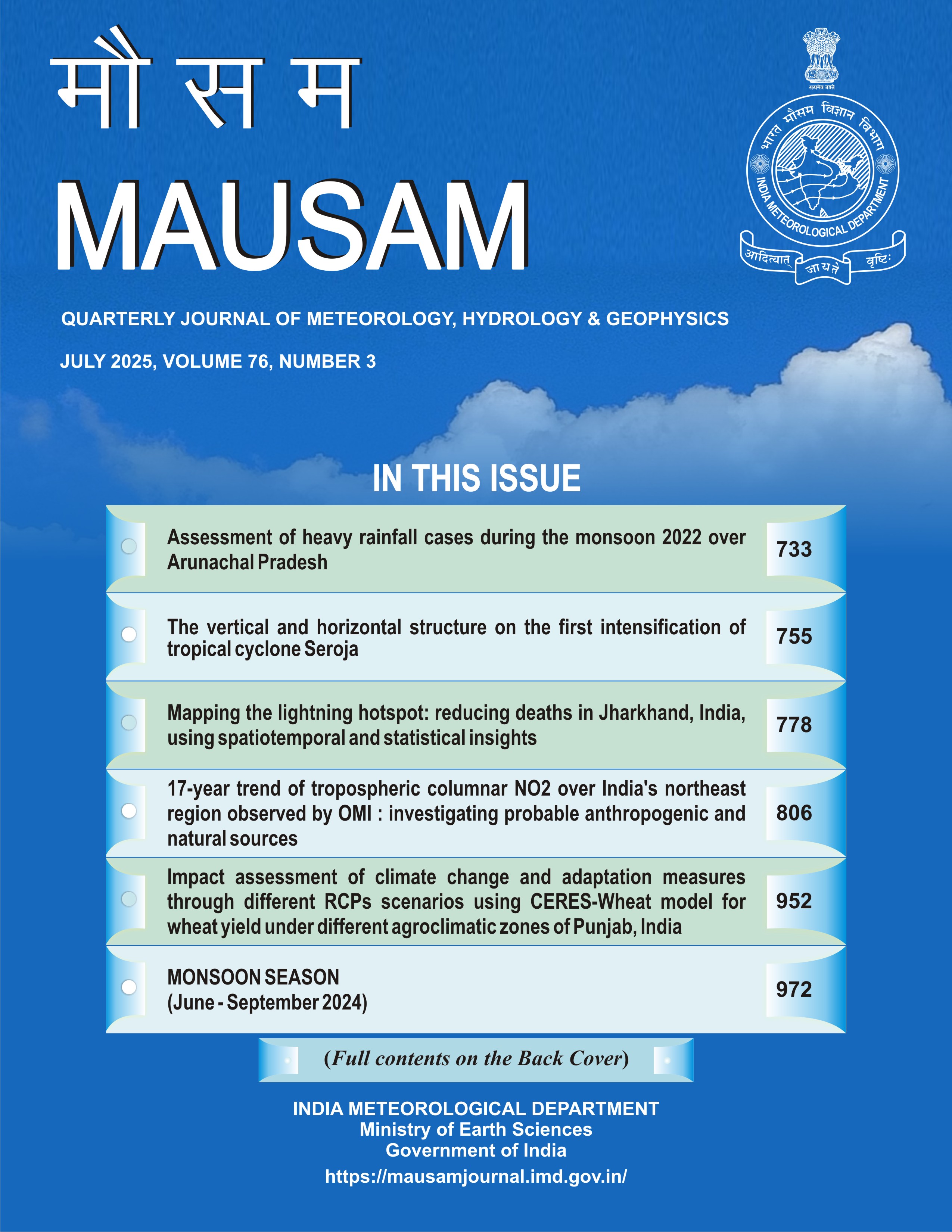Spatial Variations of Northeast Monsoon Rainfall over South Peninsular India
DOI:
https://doi.org/10.54302/mausam.v76i3.6264Abstract
This study investigates the spatial variability of Northeast Monsoon (NEM) rainfall over South Peninsular (SP) India, focusing on five meteorological subdivisions: Coastal Andhra Pradesh, Rayalaseema, Tamil Nadu, South Interior Karnataka, and Kerala. Using rainfall data from the Indian Institute of Tropical Meteorology (IITM), seasonal rainfall patterns are assessed for the NEM period (October-December), identifying active and poor monsoon years based on standardized departures. Composite rainfall values and percentage deviations provide insights into NEM performance across subdivisions. The analysis also explores key meteorological parameters, including lower tropospheric winds, relative vorticity and divergence at 1000 hPa, 850 hPa, and 200 hPa, using NCEP/NCAR Reanalysis datasets from 1948 to 2016. Outgoing Longwave Radiation (OLR) data from NOAA (1974–2016) further elucidate atmospheric circulation patterns associated with active and poor monsoon years. Findings reveal that active NEM seasons display negative OLR anomalies over SP India and surrounding seas, indicating enhanced convection, particularly in Coastal Andhra Pradesh, Rayalaseema and Tamil Nadu. Conversely, poor monsoons show positive OLR anomalies, signalling reduced convective activity. Wind and divergence anomalies highlight that active monsoons strengthen easterly flows and promote moisture transport to the Intertropical Convergence Zone (ITCZ), amplifying rainfall. During poor monsoons, weakened easterlies and reduced atmospheric convergence correspond with diminished rainfall. Notably, El Niño events generally enhance NEM rainfall, while La Niña years typically result in deficits, with some exceptions, such as in 2016.
Downloads
Published
How to Cite
Issue
Section
License
Copyright (c) 2025 MAUSAM

This work is licensed under a Creative Commons Attribution-NonCommercial 4.0 International License.
All articles published by MAUSAM are licensed under the Creative Commons Attribution 4.0 International License. This permits anyone.
Anyone is free:
- To Share - to copy, distribute and transmit the work
- To Remix - to adapt the work.
Under the following conditions:
- Share - copy and redistribute the material in any medium or format
- Adapt - remix, transform, and build upon the material for any purpose, even
commercially.



